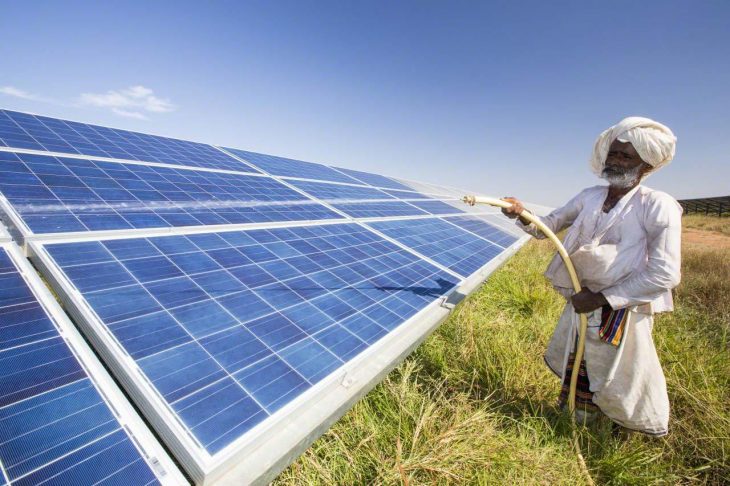In the past few years, solar pumps have consistently piqued the interest of various bureaucrats and politicians. The Prime Minister spoke about solar pumps from the ramparts of the Red Fort in 2016. There is no shortage of ideas which the Centre, States, civil society organisations, and enterprises are adopting to enhance penetration of solar for irrigation. But how should India proceed with this impactful technology?
Case studies
Maharashtra is solarising its agricultural feeders by installing solar power plants at the substation level, through competitive bidding. Karnataka is promoting solar pumps for existing grid-connected farmers under a net-metering regime, allowing them to generate additional income by feeding back surplus energy into the grid. In eastern States, GIZ, a German development agency, has piloted community ownership models providing water-as-a-service using solar pumps.
Despite the diversity of approaches and significant government subsidies, only about 1,42,000 pumps have been deployed till date against a target of one million pumps by 2021. Such limited demand, in a country with 132 million farmers and 28 million existing irrigation pumps, calls for a reflection on existing deployment approaches.
In India, 53% of the net-sown area is still rain-fed. Solar pumps hold potential to enhance irrigation access, advance low-carbon agriculture, reduce the burden of rising electricity subsidies, and improve the resilience of farmers against a changing climate. But farmers’ perspectives have to be considered and the local context appreciated when deploying the technology to maximise economic returns.
What can be done
At the Council on Energy, Environment and Water (CEEW), we have published three new research studies. I propose seven takeaways for the government to consider while promoting solar for irrigation. First, target marginal farmers with smaller solar pumps, particularly in areas with good groundwater development potential. Our research, based on a recent primary survey of 1,600 farmers in Uttar Pradesh, revealed that close to 60% of marginal farmers relied on buying water, the costliest option for irrigation, or on renting pumps to meet their needs.
Second, couple solar pump deployment with micro-irrigation and water harvesting interventions at the farm and community levels. While lack of irrigation is a major bottleneck, 30% of farmers reported limited water availability for irrigation as a challenge.
Third, focus on technology demonstration and deploy at least five solar pumps in each block of the country. CEEW research suggests that such efforts could have a profound effect on farmers’ willingness to adopt solar pumps and spur bottom-up demand.
Fourth, in regions with already good penetration of electric pumps, prefer feeder solarisation through competitive bidding over solarisation of individual pumps. A comparative economic analysis finds that solarising individual grid-connected pumps is the costliest approach for the government to expand irrigation cover, while not being the most attractive option for farmers.
Fifth, in regions with prevailing local water markets, promote community-owned solar pumps. CEEW research finds that while joint ownership drew interest from 20% of farmers, close to 80% of them were interested in buying water from a community-owned or enterprise-owned solar pump at competitive prices.
Sixth, encourage sharing of solar pumps among farmers through farmer extension programmes. Given zero marginal cost of pumping with solar, water sharing, already a prevalent practice in many parts of the country, helps put a marginal price to the water.
Seventh, provide interest-subsidy to farmers combined with reduced capital subsidy to enable large-scale deployment of solar pumps in a shorter span of time. Such an approach would cover a greater number of farmers, helping them reap the benefits of solar pumps sooner, and increase overall returns to the economy.
Guided by on-ground experiences and an expanding body of research, the government should continuously improve and innovate its support mechanisms on solar for irrigation. India must exploit the potential of this decentralised technology to achieve the dual national targets of 100 GW of solar and doubling farmers income by 2022 — setting a world-class example of greening the economy and overcoming its developmental challenges, simultaneously.



